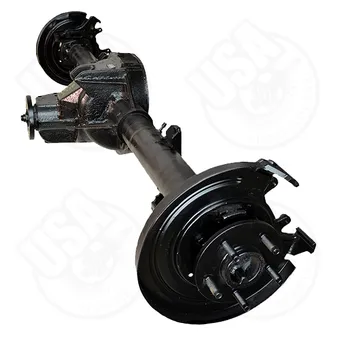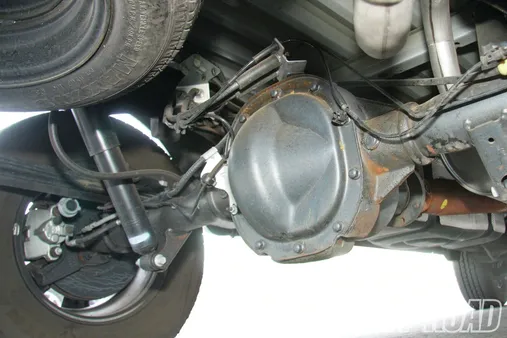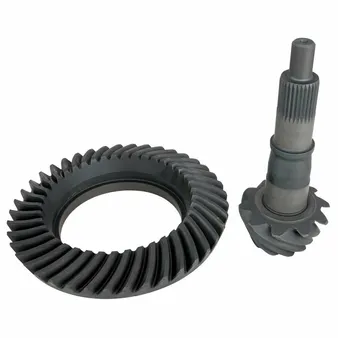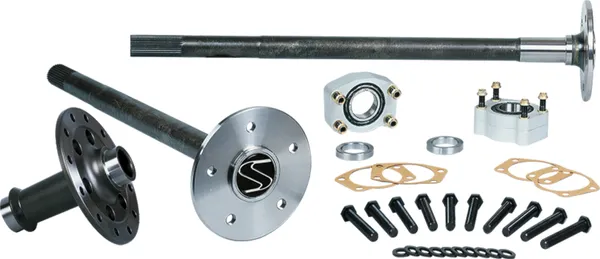Table of Contents
The ford 8.8-inch rear axle is a popular choice for off-road enthusiasts and performance enthusiasts alike. It is a strong and reliable axle that can handle a lot of abuse. If you are looking for an axle that can improve the performance of your vehicle, the Ford 8.8-inch rear axle is a great option. Westernfordhcm is a leading provider of Ford parts and accessories. We have a wide selection of Ford 8.8-inch rear axles in stock, so you can find the perfect axle for your needs.

Ford 8: The Ultimate Guide to the Legendary American Differential
I. Ford 8: Understanding the Basics
The Ford 8.8 is a rear-wheel-drive axle that was first introduced in 1986. It is commonly found in Ford Ranger and Ford Explorer vehicles. The Ford 8.8 is a semi-floating axle, which means that the axle shafts are not supported by the differential. Instead, the axle shafts are supported by the wheel bearings. This design makes the Ford 8.8 a strong and durable axle that is well-suited for off-road use.
So what are the benefits of using a Ford 8.8? For starters, it is a very strong and durable axle. This makes it a good choice for off-road use, as it can withstand the rigors of rough terrain. Additionally, the Ford 8.8 is relatively easy to work on. This makes it a good choice for do-it-yourselfers who want to upgrade their vehicle's axle.
Type | Axle Ratio | Open or Limited Slip |
|---|---|---|
Standard | 3.55:1 | Open |
Optional | 3.73:1 | Limited Slip |
- The Ford 8.8 is a good choice for off-road use because it is strong and durable.
- The Ford 8.8 is relatively easy to work on, making it a good choice for do-it-yourselfers.
- The Ford 8.8 is available with a variety of axle ratios, making it a good choice for a variety of applications.
Of course, the Ford 8.8 is not without its drawbacks. One of the biggest drawbacks is that it is not as strong as a full-floating axle. This means that it is more susceptible to damage if the axle shaft breaks. Additionally, the Ford 8.8 can be more expensive to purchase and install than other types of axles.
II. Ford 8: Troubleshooting Common Issues
The Ford 8.8-inch rear axle is a popular choice for many Ford vehicles, including the Mustang, F-150, and Ranger. It is a strong and reliable axle, but like any other mechanical component, it can experience problems from time to time.
One of the most common problems with the Ford 8.8-inch rear axle is a leak in the pinion seal. This seal is located at the front of the axle, where the driveshaft connects to the pinion gear. If the seal fails, it can allow gear oil to leak out of the axle, which can lead to a loss of lubrication and damage to the gears.
Another common problem with the Ford 8.8-inch rear axle is a worn-out ring and pinion gear. These gears are located inside the axle housing, and they are responsible for transferring power from the driveshaft to the wheels. If the ring and pinion gears are worn out, they can cause the axle to make a whining or grinding noise, and they can also lead to a loss of power.
If you are experiencing any problems with your Ford 8.8-inch rear axle, it is important to have it inspected by a qualified mechanic as soon as possible. Ignoring these problems can lead to more serious damage to the axle, which can be expensive to repair.
Problem | Cause | Solution |
|---|---|---|
Pinion seal leak | Worn or damaged seal | Replace the seal |
Worn-out ring and pinion gear | Excessive wear and tear | Replace the ring and pinion gear |
Whining or grinding noise | Worn-out bearings or gears | Inspect and replace the worn-out components |
- Check the fluid level in the axle regularly.
- Inspect the axle for any leaks or damage.
- Have the axle serviced by a qualified mechanic every 30,000 miles.
By following these tips, you can help to keep your Ford 8.8-inch rear axle in good condition and avoid costly repairs.
If you are experiencing any problems with your Ford 8.8-inch rear axle, it is important to have it inspected by a qualified mechanic as soon as possible. Ignoring these problems can lead to more serious damage to the axle, which can be expensive to repair.
Here are some additional tips for troubleshooting common problems with the Ford 8.8-inch rear axle:
- If you are experiencing a leak in the pinion seal, you can try to tighten the seal bolts. If this does not stop the leak, you will need to replace the seal.
- If you are experiencing a worn-out ring and pinion gear, you will need to replace the gears. This is a complex repair that should be performed by a qualified mechanic.
- If you are experiencing a whining or grinding noise, you can try to inspect the bearings and gears for wear and tear. If you find any worn-out components, you will need to replace them.
By following these tips, you can help to keep your Ford 8.8-inch rear axle in good condition and avoid costly repairs.
The Ford 8.8-inch rear axle is a strong and reliable axle, but like any other mechanical component, it can experience problems from time to time. By following the tips in this article, you can help to troubleshoot common problems with the Ford 8.8-inch rear axle and keep it in good condition.
If you are experiencing any problems with your Ford 8.8-inch rear axle, it is important to have it inspected by a qualified mechanic as soon as possible. Ignoring these problems can lead to more serious damage to the axle, which can be expensive to repair.
Here are some additional resources that you may find helpful:
- Ford 8.8-Inch Axle Forum
- Ford 8.8-Inch Axle Technical Library
- How to Rebuild a Ford 8.8-Inch Rear Axle

Ford 8: Troubleshooting Common Issues
III. Upgrading the Ford 8: Performance Enhancements
The Ford 8.8 is a popular rear axle found in a variety of Ford vehicles, including the Mustang, F-150, and Ranger. It is known for its strength and durability, making it a good choice for performance applications. There are a number of ways to upgrade the Ford 8.8 to improve its performance, including installing a limited-slip differential, upgrading the axles, and adding a traction control system.
One of the most popular upgrades for the Ford 8.8 is a limited-slip differential. A limited-slip differential allows the wheels on one side of the axle to spin at a different speed than the wheels on the other side, which can improve traction in slippery conditions. There are a number of different types of limited-slip differentials available, so it is important to choose one that is right for your application.
Type | Description |
|---|---|
Clutch-type | Uses friction plates to limit slip |
Torsen | Uses gears to limit slip |
Helical | Uses helical gears to limit slip |
Another popular upgrade for the Ford 8.8 is upgrading the axles. The stock axles in the Ford 8.8 are made of steel, which can be prone to bending or breaking under heavy loads. Upgrading to aftermarket axles made of a stronger material, such as chromoly, can help to prevent this from happening.
Finally, adding a traction control system can help to improve the performance of the Ford 8.8 in slippery conditions. Traction control systems use a variety of sensors to monitor the speed of the wheels and the amount of slip, and they can apply the brakes to individual wheels to help prevent them from spinning. There are a number of different traction control systems available, so it is important to choose one that is right for your application.

Upgrading the Ford 8: Performance Enhancements
IV. Ford 8 vs. Other Rear Differentials
The Ford 8.8-inch rear differential is a popular choice for many off-road enthusiasts. It is known for its strength and durability, and it can handle a lot of abuse. However, there are other rear differentials on the market that may be a better choice for your needs. Here is a comparison of the Ford 8.8-inch rear differential to some of its competitors.
One of the most popular alternatives to the Ford 8.8-inch rear differential is the Dana 44. The Dana 44 is a heavy-duty rear differential that is often used in Jeeps and other off-road vehicles. It is stronger than the Ford 8.8-inch rear differential, and it can handle more torque. However, the Dana 44 is also more expensive than the Ford 8.8-inch rear differential.
Differential | Strength | Durability | Price |
|---|---|---|---|
Ford 8.8-inch | Good | Good | $500-$1,000 |
Dana 44 | Excellent | Excellent | $1,000-$1,500 |
GM 10-bolt | Good | Fair | $400-$800 |
Chrysler 8.25-inch | Fair | Good | $300-$700 |
Another popular alternative to the Ford 8.8-inch rear differential is the GM 10-bolt. The GM 10-bolt is a lightweight rear differential that is often used in GM vehicles. It is not as strong as the Ford 8.8-inch rear differential or the Dana 44, but it is more affordable. The GM 10-bolt is a good choice for those who are on a budget.
The Chrysler 8.25-inch rear differential is another option for those who are looking for an affordable rear differential. The Chrysler 8.25-inch rear differential is not as strong as the Ford 8.8-inch rear differential or the Dana 44, but it is still a good choice for many applications. The Chrysler 8.25-inch rear differential is often used in Chrysler vehicles.
Ultimately, the best rear differential for you will depend on your specific needs. If you need a strong and durable rear differential that can handle a lot of abuse, then the Ford 8.8-inch rear differential is a good choice. If you are on a budget, then the GM 10-bolt or the Chrysler 8.25-inch rear differential may be a better option.

Ford 8 vs. Other Rear Differentials
V. Ford 8: Maintenance and Repair
Regular Maintenance
Regular maintenance is essential to keep your Ford 8.8 in good condition. This includes changing the oil and filter, checking the fluid levels, and inspecting the brakes. You should also have your Ford 8.8 inspected by a qualified mechanic at least once a year.
- Change the oil and filter every 3,000 miles or 6 months.
- Check the fluid levels every month.
- Inspect the brakes every 6 months.
- Have your Ford 8.8 inspected by a qualified mechanic at least once a year.
Common Repairs
The Ford 8.8 is a reliable axle, but it can experience some common repairs. These include:
- Leaking axle seals
- Worn bearings
- Damaged gears
If you experience any of these problems, it is important to have your Ford 8.8 repaired by a qualified mechanic.
Tips for Extending the Life of Your Ford 8.8
There are a few things you can do to extend the life of your Ford 8.8. These include:
- Change the oil and filter regularly.
- Check the fluid levels regularly.
- Inspect the brakes regularly.
- Have your Ford 8.8 inspected by a qualified mechanic at least once a year.
- Avoid overloading your Ford 8.8.
- Drive carefully.
By following these tips, you can help keep your Ford 8.8 in good condition for many years to come.
Maintenance Task | Frequency |
|---|---|
Change the oil and filter | Every 3,000 miles or 6 months |
Check the fluid levels | Every month |
Inspect the brakes | Every 6 months |
Have your Ford 8.8 inspected by a qualified mechanic | At least once a year |

Ford 8: Maintenance and Repair